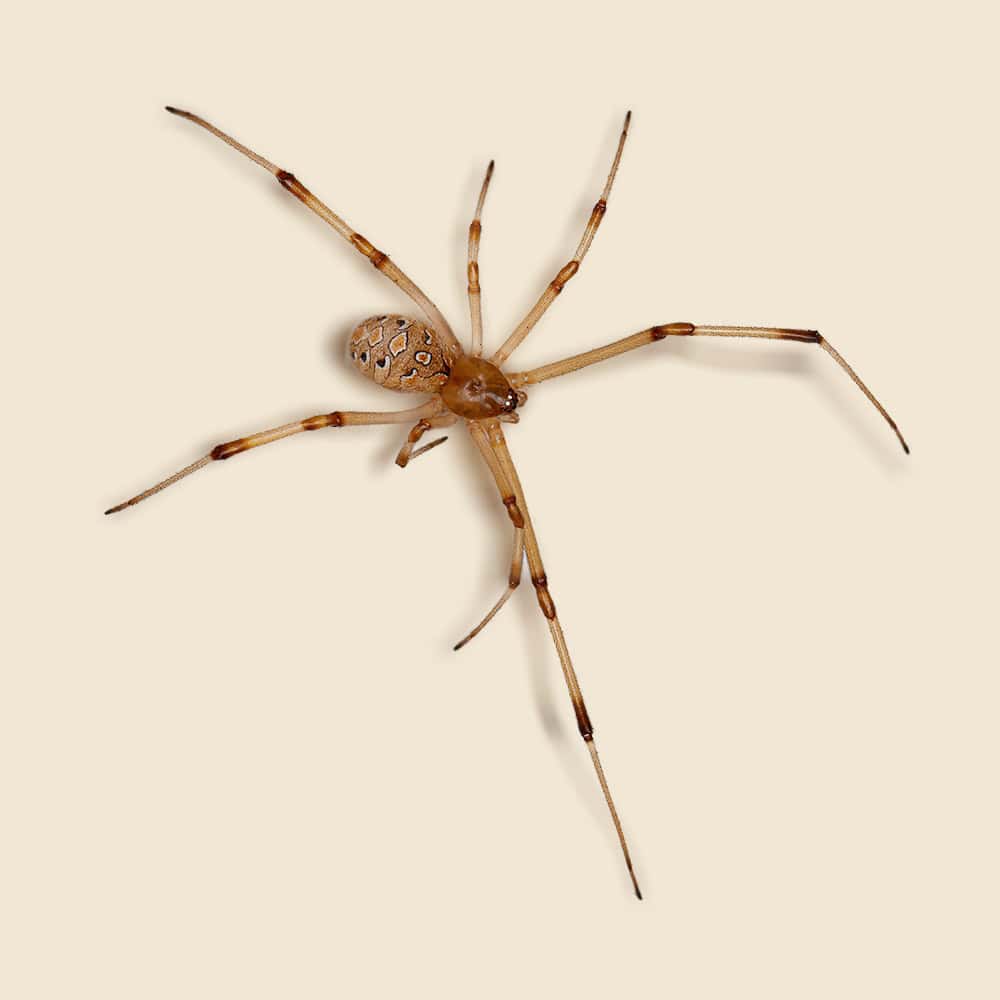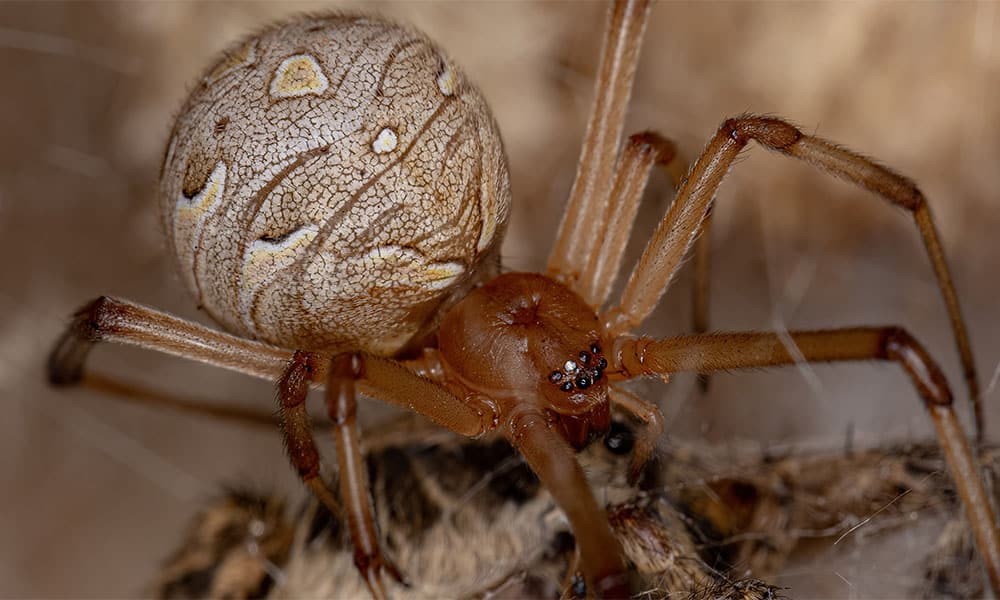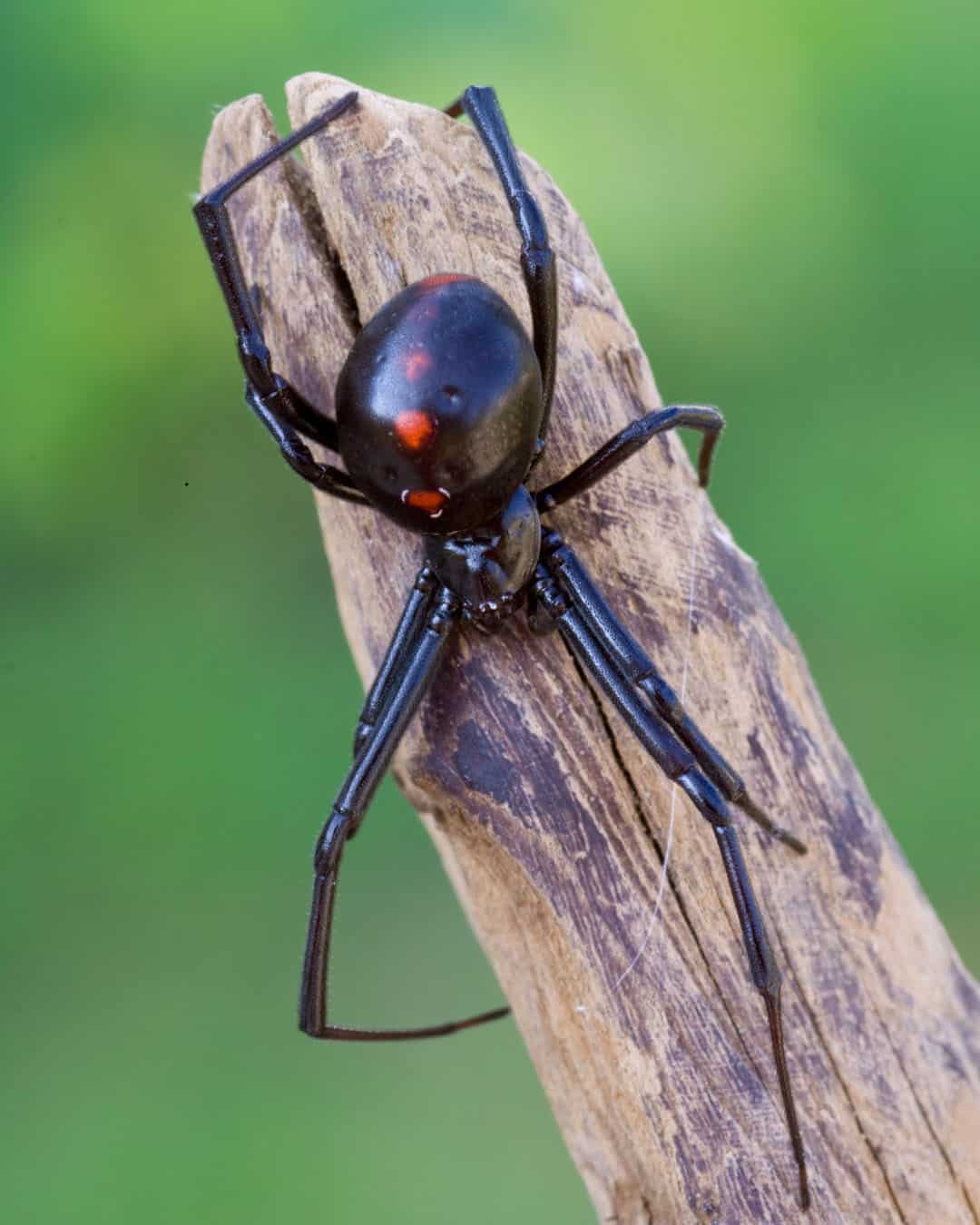Widow Spider Facts & Information
Widow spiders, including the notorious black widow, are venomous arachnids known for their distinctive hourglass marking and potent bite. These spiders are typically found in dark, undisturbed areas like sheds, garages, and basements. While widow spiders generally avoid humans, their bite can cause serious health concerns, making them a significant pest in residential and commercial properties.

Latrodectus Walckenaer, 1805
What You Need To Know About Widow Spiders
What do widow spiders look like?
Widow spiders are typically black or dark brown and are easily recognized by their shiny, smooth bodies. Female black widow spiders, the most well-known species, have a distinct red or orange hourglass shape on the underside of their abdomen. Males are much smaller and lighter in color, often with less noticeable markings.
What do widow spiders eat?
Widow spiders are carnivorous and primarily feed on insects like flies, mosquitoes, grasshoppers, and beetles. They capture their prey in irregular, tangled webs, which are strong and sticky, trapping unsuspecting insects for the spider to subdue and consume.
What sort of habitat do widow spiders live in?
Widow spiders prefer dark, secluded areas where they can spin their webs. They are commonly found in basements, garages, sheds, woodpiles, and under outdoor furniture. They can also be found in natural environments like rocky crevices, hollow logs, or dense vegetation.
How do widow spiders commonly behave?
Widow spiders are solitary and shy, generally avoiding human contact. Females are more aggressive than males, especially when defending their egg sacs. Although they rarely bite humans, when they do, their bite can be dangerous due to the potent neurotoxic venom. However, bites are uncommon, as widow spiders tend to retreat when disturbed.
Did you know this about widow spiders?
The name “widow spider” comes from the mating behavior of some species, where the female may occasionally eat the male after mating, though this is not common in all widow spider species. Their venom is 15 times stronger than a rattlesnake’s, but widow spider bites rarely cause fatalities in humans due to modern medical treatments.
Understanding Widow Spider Infestations
Black and Brown Widow Spiders are notorious for their potent venom and distinctive markings, with the Black Widow boasting a shiny black body and red hourglass marking, while the Brown Widow features a tan to dark brown body with an orange hourglass. These spiders often inhabit dark, undisturbed areas such as basements, garages, and sheds, creating tangled webs to catch their prey.

How Hearts Handles Widow Spider Treatment
Hearts Pest Management employs a comprehensive approach to widow spider treatment, prioritizing both immediate extermination and long-term prevention. Our certified technicians begin with a thorough inspection to locate spider habitats and assess the infestation level. We then apply effective, environmentally conscious treatments to eradicate the spiders. Additionally, we provide preventive measures and educational resources to help homeowners maintain a spider-free environment.
Widow Spider Inspection
Widow Spider Treatment
Widow Spider Prevention
Educational Resources

Think You Might Have a Widow Spider Infestation?
At Hearts Pest Control, we understand the challenges associated with Widow Spider infestations and are here to provide professional solutions tailored to your needs. Flourishing in warm and humid climates, they are prevalent in many regions, including San Diego County, Orange County, and Los Angeles County.